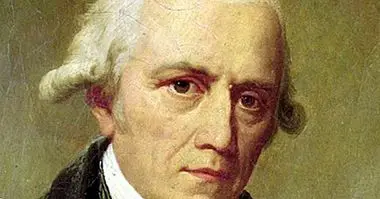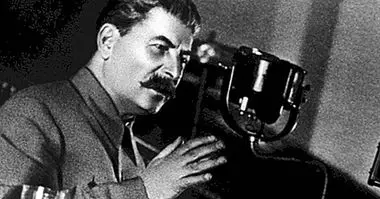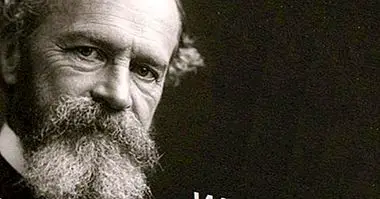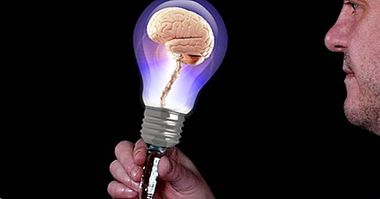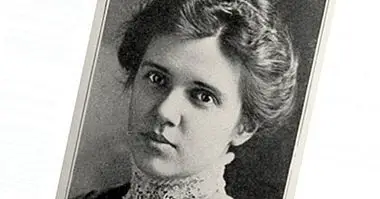Edward Tolman: biography and study of cognitive maps
Edward C. Tolman was the initiator of proactive behaviorism and a key figure for the introduction of cognitive variables in behavioral models.
Even though the study of cognitive maps is Tolman's best-known contribution , the theory of this author is much broader and was a true turning point in scientific psychology.
- Related article: "History of Psychology: authors and main theories"
Biography of Edward Tolman

Edward Chace Tolman was born in Newton, Massachusetts in 1886. Although his father wanted the family business to continue, Tolman decided to study electrochemistry; However, after reading William James he discovered his vocation for philosophy and psychology, a discipline to which he would end up dedicating himself.
He graduated in Psychology and Philosophy at Harvard . Soon after, he moved to Germany to continue training on his way to the doctorate. There he studied with Kurt Koffka; Through it he became familiar with the psychology of Gestalt, which analyzed perception by focusing on the overall experience rather than on the separate elements.
Back at Harvard, Tolman investigated the learning of meaningless syllables under the command of Hugo Münsterberg, pioneer of applied psychology and that of organizations. He obtained his doctorate with a thesis on retroactive inhibition , a phenomenon that consists of the interference of new material in the recovery of previously learned memories.
After being expelled from Northwestern University, where he worked as a teacher for three years, for publicly opposing the American intervention in the First World War, Tolman began teaching at the University of California Berkeley. There he spent the rest of his career, from 1918 until his death in 1959.
Theoretical contributions to Psychology
Tolman was one of the first authors to study the cognitive processes from the framework of behaviorism ; Although it was based on behavioral methodology, it wanted to demonstrate that animals could learn information about the world and use it in a flexible way, and not only automatic responses to certain environmental stimuli.
Tolman conceptualized cognitions and other mental contents (expectations, objectives ...) as intervening variables that mediate between the stimulus and the response. The organism is not understood as passive, in the manner of classical behaviorism, but actively manages information.
This author was especially interested in the intentional aspect of behavior, that is, in goal-oriented behavior; thus his proposals are categorized as "proactive behaviorism" .
- Perhaps you are interested: "Iván Pávlov: biography of this reference of behaviorism"
The E-E and E-R learning models
In the mid-twentieth century there was a profound debate within the behavioral orientation about the nature of conditioning and the role of reinforcement. Thus, the Stimulus-Response (E-R) model, personified in authors such as Thorndike, Guthrie or Hull, and the Stimulus-Stimulus (E-E) paradigm, of which Tolman was the most important representative, were opposed.
According to the E-E model, learning is produced by the association between a conditioned and an unconditioned stimulus, which evokes the same conditioned response in the presence of reinforcement; On the other hand, from the E-R perspective, it was defended that learning consists of association between a conditioned stimulus and a conditioned response .
Thus, Tolman and related authors considered that learning depends on the subject detecting the relationship between two stimuli, which will allow him to obtain a reward or avoid punishment, in front of the representatives of the ER model, which defined learning as the acquisition of a conditioned response to the appearance of a previously unconditioned stimulus.
From the E-R paradigm, a mechanistic and passive view of the behavior of living beings was proposed, while the E-E model affirmed that the role of the learner is active since it implies a component of voluntary cognitive processing, with a certain goal .
Experiments on latent learning
Hugh Blodgett had studied latent learning (which does not manifest itself as an immediate observable response) through experiments with rats and labyrinths. Tolman developed his famous proposal on cognitive maps and much of the rest of his work based on this concept and the works of Blodgett.
In Tolman's initial experiment Three groups of rats were trained to walk a labyrinth . In the control group the animals obtained food (reinforcement) at the end; On the other hand, the rats of the first experimental group only obtained the reward from the seventh day of training, and those of the second experimental group from the third day.
Tolman found that the error rate of the control group rats decreased from the first day, while those of the experimental groups did so abruptly from the introduction of the food. These results suggested that the rats learned the route in all cases, but only reached the end of the labyrinth if they expected to get reinforcement.
So, this author Theorized that the execution of a behavior depends on the expectation of obtaining reinforcement or , but that nevertheless the learning of such behavior can occur without the need for a process of reinforcement.
- Related article: "Cognitive psychology: definition, theories and main authors"
The study of cognitive maps
Tolman proposed the concept of cognitive maps to explain the results of his experiments and those of Blodgett. According to this hypothesis, the rats built mental representations of the labyrinth during the training sessions without the need for reinforcement, and therefore knew how to reach the goal when it made sense.
The same would happen to people during everyday life : when we repeat a route frequently we learn the location of a large number of buildings and places; however, we will only address them in case it is necessary to reach a certain goal.
To demonstrate the existence of cognitive maps Tolman made another experiment similar to the previous one, but in which after the rats learned the route of the labyrinth it was filled with water. Despite this, the animals managed to reach the place where they knew they would find food.
In this way he confirmed that the rats they did not learn to execute a chain of muscular movements , as the theorists of the E-R paradigm defended, but rather cognitive variables, or at least unobservables, were needed to explain the learning they had acquired, and the response used to reach the objective could vary.


